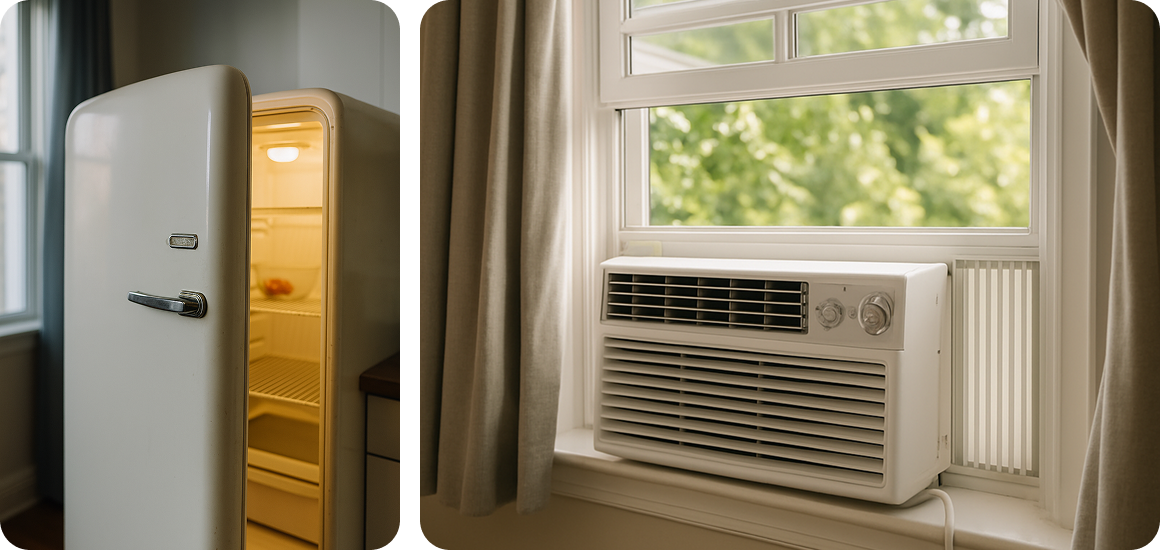How Much Energy Is Your House Seriously Wasting?
Alright, let’s get real for a second. You ever wonder why your electric bill looks like it just came back from a Vegas bender? Odds are, your place is busy burning through power thanks to hidden home energy leaks you haven’t noticed yet.
Miami and the rest of South Florida make it way easier to waste energy than you’d expect. Blame the heat, the humidity, and homes built for looks, not efficiency.
You probably don’t have to empty your bank account and rip your house apart to fix it either.
Most fixes are stupid easy—like, run-to-the-store-and-back easy. Cheap too. Good news, right?
Here’s what’s coming up:
– What “energy waste” even means (spoiler: it isn’t just leaving the lights on)
– Where houses lose energy the most
– Obvious and not-so-obvious warning signs
– Fast fixes that actually make a dent
– Bigger upgrades if you’re feeling fancy (and they eventually pay you back)
So, What’s “Wasted Energy” Anyway?
Literally just what it sounds like—power your home uses for nothing.
Imagine trying to fill up a kiddie pool with a giant crack in the bottom. That’s what your A/C and fridge are doing every day. The more you pour in, the more leaks out. Painful for your wallet, sad for the planet, and kinda embarrassing when you think about it.
What’s to blame? Old appliances acting like energy vampires, non-existent insulation, leaky windows letting the cool air peace out, and—let’s be honest—our lazy habits, like leaving stuff plugged in 24/7.

5 Sneaky Ways Your Home’s Wasting Energy (And You Won’t Notice)
These are the most common home energy leaks homeowners never notice—until the bill comes in.
- Old Appliances
Yeah, that ancient fridge or prehistoric A/C “still works,” but it’s guzzling power like a frat boy at spring break—20-40% more than anything you’d buy today. And don’t get me started on TVs and chargers sucking power *even when they’re off.* Phantom loads are real, people.
- Air Leaks and Lousy Insulation
Small cracks and gaps around windows, doors, or that spooky attic space? They let A/C escape while hot air rolls in like it owns the place. In Florida, that’s basically asking for a higher bill.
- Outdated Lighting
Incandescent bulbs—in 2024? C’mon. These things eat up to 80% more juice than LEDs. And if you leave ‘em burning when nobody’s around, you’re basically lighting a pile of cash on fire.
- HVAC Drama
In Florida, your cooling system is the star of the show, eating up 40–60% of your whole energy bill. Dirty filters, crusty old maintenance, or not using a smart thermostat mean it works overtime. More work = fatter bills. Not cool.
- Old Electrical Junk
If your place is vintage (read: pre-2000), odds are the wiring’s not up to modern standards. That means lost power, extra heat, and sometimes, real-deal safety issues.

How To Tell if Your Home’s an Energy Sieve
No need to hire Ghostbusters or buy a fancy tool belt. Ask yourself:
– Are your power bills stupid high even when it’s not a scorcher outside?
– Do some rooms feel like the Arctic, others like a sauna?
– Is your AC working harder than a barista in a morning rush?
– Windows foggy, or is your house annoyingly humid?
– Lights flicker or dim whenever you start up something big?
– Laptops or phones getting hot for no reason, or dying quick?
Not sure where to start? Take our Free Energy Saving Test and get a quick snapshot of where your biggest leaks might be hiding.
Still can’t tell? Ask a pro to take a look. Legit home energy analysts (hint: like us, Smart Hub Advisors) use thermal cams and all sorts of techy stuff to spot leaks and vampire appliances.
Why Ignoring It is a Wallet-Killer
Bottom line? Ignoring home energy leaks means letting your money evaporate month after month.
Here’s the rude math nobody wants to face:
– Old fridge? That’s $100–150/year for the privilege of being stubborn.
– Weak insulation? You’re burning up to 40% extra on cooling.
– Forgetting to unplug things? Up to 10% of your power just… wasted.
If your monthly bill is $250, you could be putting $600–$1,000 back in your own pocket every year. Buy yourself something nice, for once.
5 Fast Fixes You Can Actually Do (Like, Today)
- Seal Up Air Leaks
Run to the hardware store for some weatherstripping or caulk and plug those holes.
Costs: ~50 bucks | Savings: Up to 15% on your cooling bill
- Swap in LED Bulbs
Lose the old bulbs. LEDs are cheap, last practically forever, and use way less electricity.
Cost: $2–4 a bulb | Savings: 75% per bulb. Seriously!
- Install a Smart Thermostat
These things learn your routine and adjust. No more A/C blasting when you’re not home.
Cost: $100–250 | Savings: Up to $180 a year
- Change Your HVAC Filters
Every 1–3 months, swap them out. Old filters = harder work = more money flying away.
Cost: $10/month | Boosts efficiency by up to 15%
- Unplug Devices You Ignore
Stop letting chargers and game consoles drain power all day. Or get a smart power strip.
Savings: Up to $100/year, no sweat
Want more proven ways to cut power use fast? Explore Energy.gov’s Home Energy Saver Guide for tools and tips backed by real data.

Thinking About The Future? Try These Upgrades
Once the basics are down, go big:
– Beef up your insulation (attic, walls, crawlspace—whatever looks worst). It pays for itself in a few years.
– Go solar. Florida’s basically begging you. It pays itself off in 6–9 years, especially with tax breaks.
– Swap out old appliances for those with the ENERGY STAR label. Rebates are often there for the taking.
– Add an energy monitor—it’s kinda wild to watch real-time peaks (and it might make you a little obsessed).
Want your upgrades to actually boost property value? Check out our post on how energy efficiency increases your home value.
Want a Precise, No-Nonsense Report?
This is where we step in. At Smart Hub Advisors, we give free, no-BS home energy checkups tailored for South Florida.
We’ll walk your property, check your bills, point things out you’ve probably never noticed, and build a custom savings plan. You just sit back and enjoy a lower bill, more comfort, and bragging rights with the neighbors.




